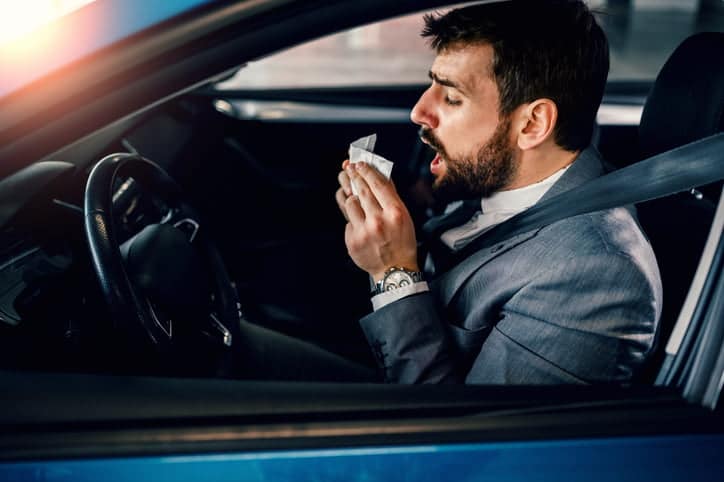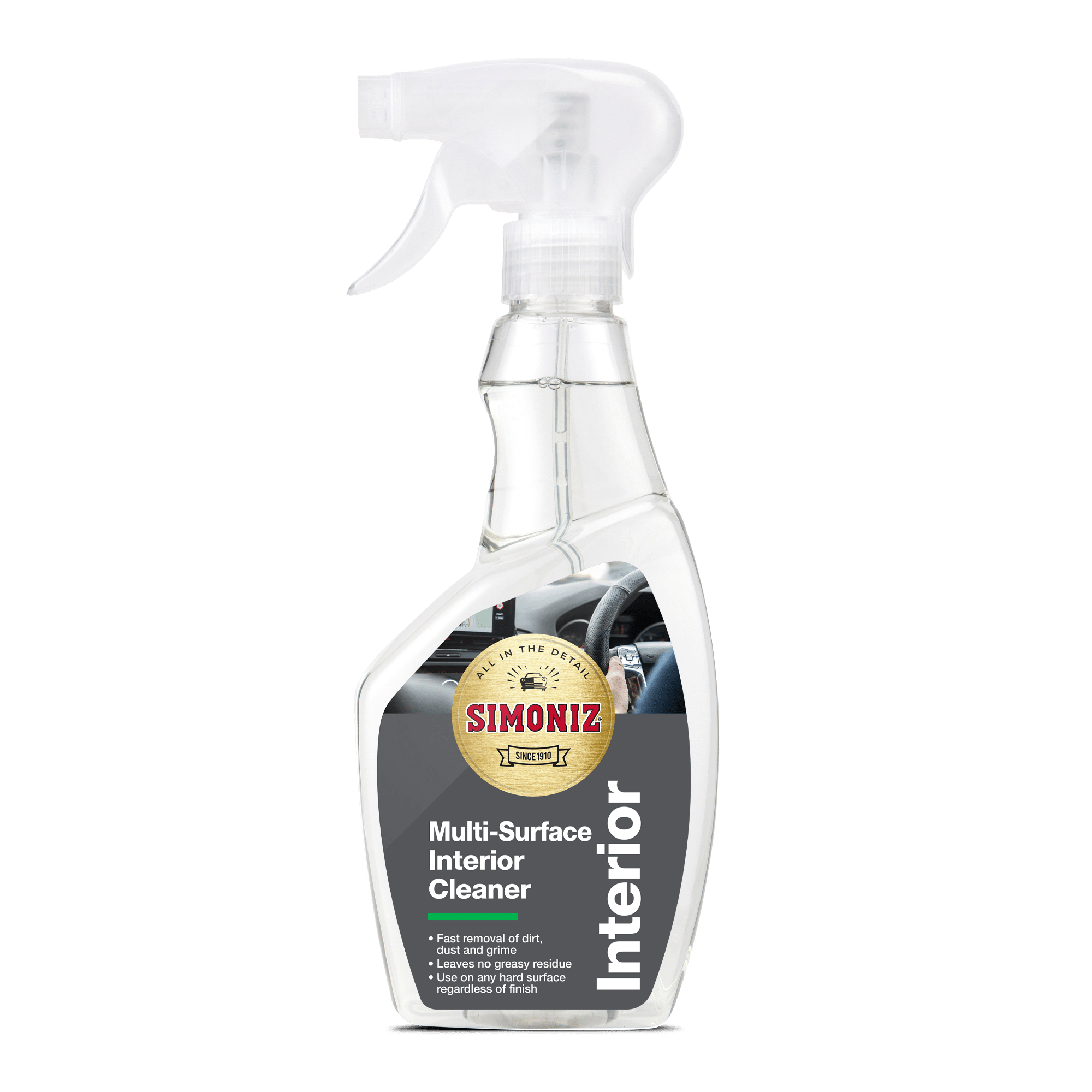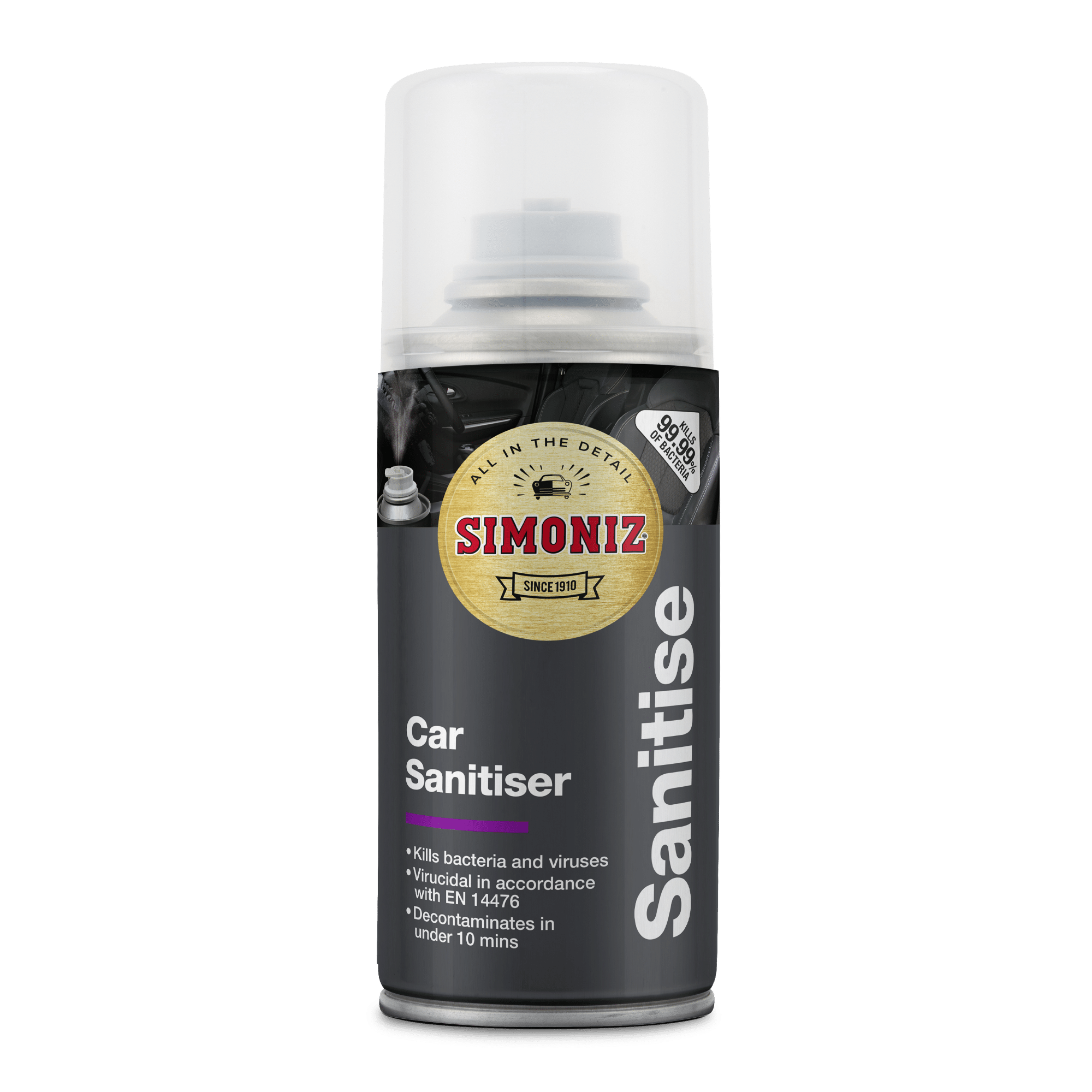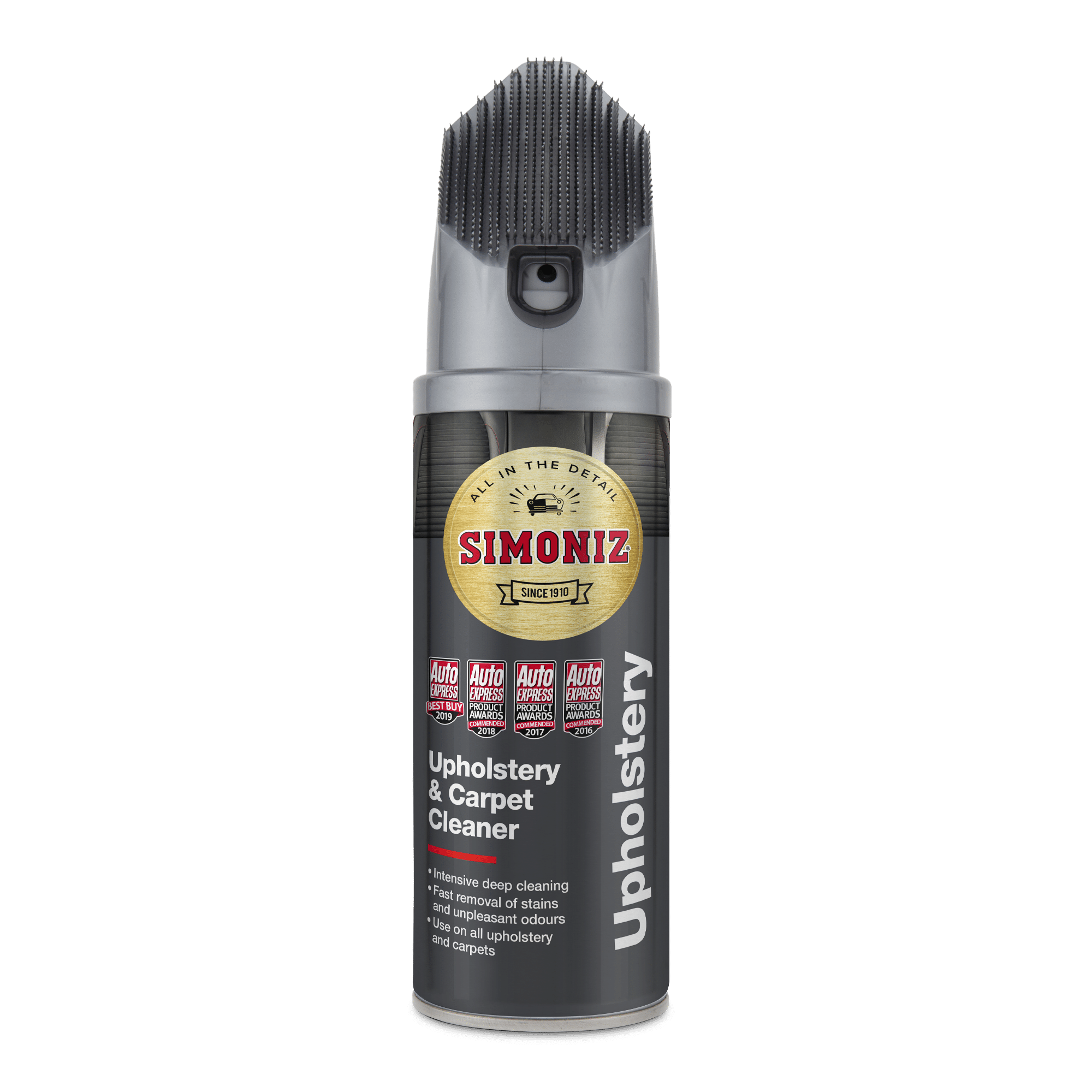Every driver knows the fear of doing a huge sneeze in the fast lane. At motorway speed, a sneeze can mean you’ve got your eyes closed for a couple of seconds – daunting when you’re clocking along at 70mph!
Sneezing is the body’s way of clearing allergens, like dust, pollen, dirt, pollution and pet hairs, from the nose. When it happens while driving, it’s not only dangerous but can also mean that your steering wheel and controls get covered in germs and bacteria – compromising your car’s cleanliness and hygiene.
So, to prevent sneezes and other allergies at the wheel, it’s good to know how to tackle the common allergens that can trigger them. While it’s impossible to prevent sneezing altogether, there are things you can do to reduce allergens and maintain your car’s cleanliness.
Dust and Dirt
Dust and dirt can trigger all sorts of allergic reactions, from sneezes and coughs to dry, itchy eyes. The good news is, these visible allergens are some of the easiest to take care of – and it all comes down to how often you clean the inside of your car.
Here are some essential tips on how to rid your car of dust and dirt allergens:
- Clean the dashboard and driver controls at least every two weeks, in line with the rest of your car. Dust can build up on the flat section of the dash, where it can easily transfer to your face and hands. Use the Simoniz Multi-Surface Interior Detailer and one of our dashboard cleaners to help keep this area clean.
- As well as the dash, make sure the vents are kept clean and dust-free. A vacuum crevice tool is useful for cleaning these hard-to-reach areas, and will help stop dust and dirt from blowing straight into your face.
- While you’ve got a vacuum to hand, be sure to keep on top of the seats and carpet. Upholstered surfaces can get clogged up with dirt if they’re not cleaned regularly, so vacuum once a fortnight to minimise the amount of dust they transfer into the cabin.
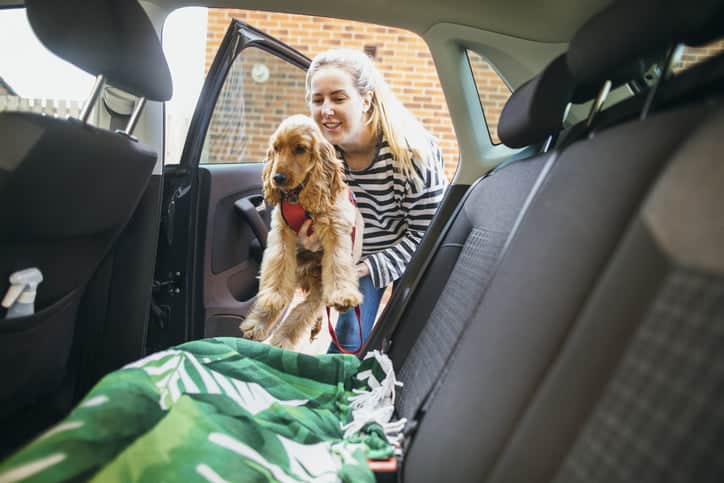
Pet Hairs
If your four-legged friend is a regular passenger in your car, there’s a good chance they caused your last fit of sneezes. Pet hairs are among the biggest culprits when it comes to allergies, so it’s important to keep on top of your car’s cleanliness when Rex has been riding shotgun.
Here are some of the best ways to prevent pet hair allergens in your car.
- Start by separating your dog from the rest of the cabin by having them ride in the boot.
- When they’re in the boot, it’s a good idea to put a rubber liner down so that their hairs don’t get matted up in the carpets and upholstery. Removable boot liners are easy to clean and will help stop pet hairs spreading to other surfaces in your car.
- Of course, one of the best ways to keep pet hairs to a minimum is to vacuum often – preferably after every trip out with your dog.
- As well as vacuuming, you should clean any surfaces your dog comes into contact with, whether it’s the boot floor or rear-passenger seats. Pet allergens are often found in saliva, so using something like Simoniz Upholstery & Carpet Cleaner will lift dirt to minimise allergies.
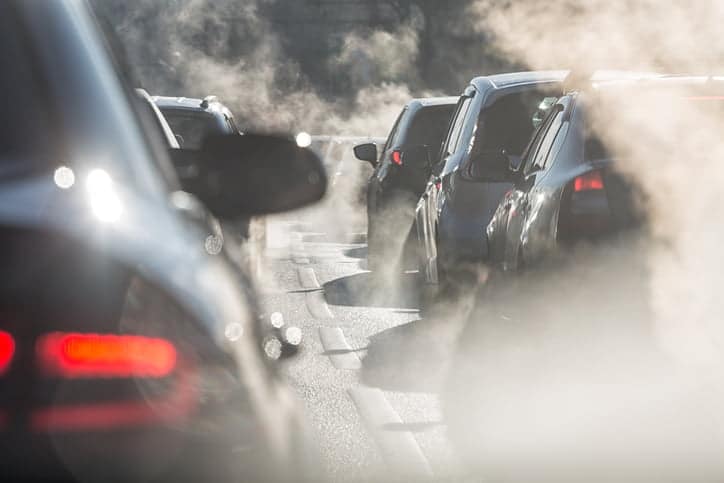
Pollution
Pollution is one of the most common causes of allergies among drivers and can cause a range of symptoms, from sneezes and dry eyes to coughing and a sore throat. If you drive at peak times, particularly in towns and cities, you’ll be exposed to toxic fumes which not only cause allergies, but that may affect your overall health in the long term.
Because pollution is invisible, it can be tricky to avoid. There are, however, a couple of things you can do to minimise your exposure to fumes while driving:
- The first and most obvious point: don’t drive with your windows open. As well as being bad for fuel economy, this will mean you’re exposed to the highest volume of pollution. If it’s a warm day, use the air conditioning to keep cool.
- And, while we’re on the topic of air conditioning, always make sure to use the air recirculation button when the a/c is on. This will circulate the air already inside the car for cooling, rather than taking more from outside which could bring in fumes.
- You should also keep on top of the air conditioning unit’s maintenance and upkeep. Allergens will build in the system over time, so have it serviced regularly to keep the system working at its best. The Simoniz Car Sanitiser can make quick work of this step, and will kill germs and bacteria.
- Another way to minimise pollution during town driving is to hang back from the car in front. Pollution is at its worse when cars are sat idling in a queue, so leaving a good gap between you and the car in front will mean that their exhaust fumes aren’t being drawn straight into the cabin. Closing the vents and switching off fans is also good practice when you’re sat in a long traffic jam.
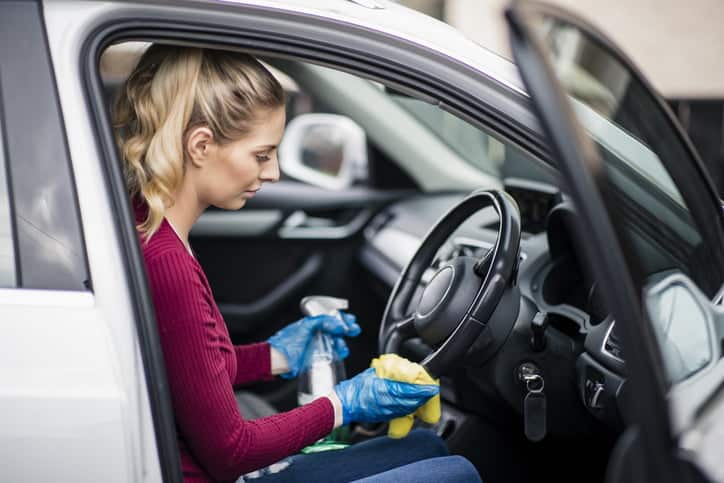
Mould
Mould? In my car? Surely not? Well, you might be surprised. Given the right conditions, mould spores can grow on most surfaces, so there’s a high likelihood there’ll be at least some in your car.
From damp car mats to window seals, mould may be present in several areas around your car’s cabin, and could be the thing that’s been causing all those sneezes. Here are a couple of tips on how to tackle mould in your car.
- After driving with wet shoes on your car mats, remove them and make sure they’re aired out somewhere dry. Mould spores can grow in carpet fibres, so clean upholstered surfaces regularly to prevent bacterial growth.
- Make sure hard-to-reach areas, like door bins and other crevices, are cleaned regularly. Mould will grow readily in these sorts of places if given the chance, so come up with a way to clean all surfaces in the cabin. You might want to put a disposable cleaning wipe on the end of a chopstick, for example, to reach in and clean a particular area.
- Be sure to remove all rubbish, particularly food wrappers, from your car after every journey.
- Have a look at the seal along the bottom of your car’s windows. Mould is common here, because water runs down the glass and gathers on the rubber, creating the ideal conditions for bacterial growth. You can clean this area by carefully sliding a thin implement along the edge of the seal, removing any dirt, mould or debris.
We hope this guide is useful in helping you tackle common allergens in your car. For more car cleaning and maintenance guides, click here for the Simoniz blog. If you’d like to know more about our car care products, visit the homepage today.
